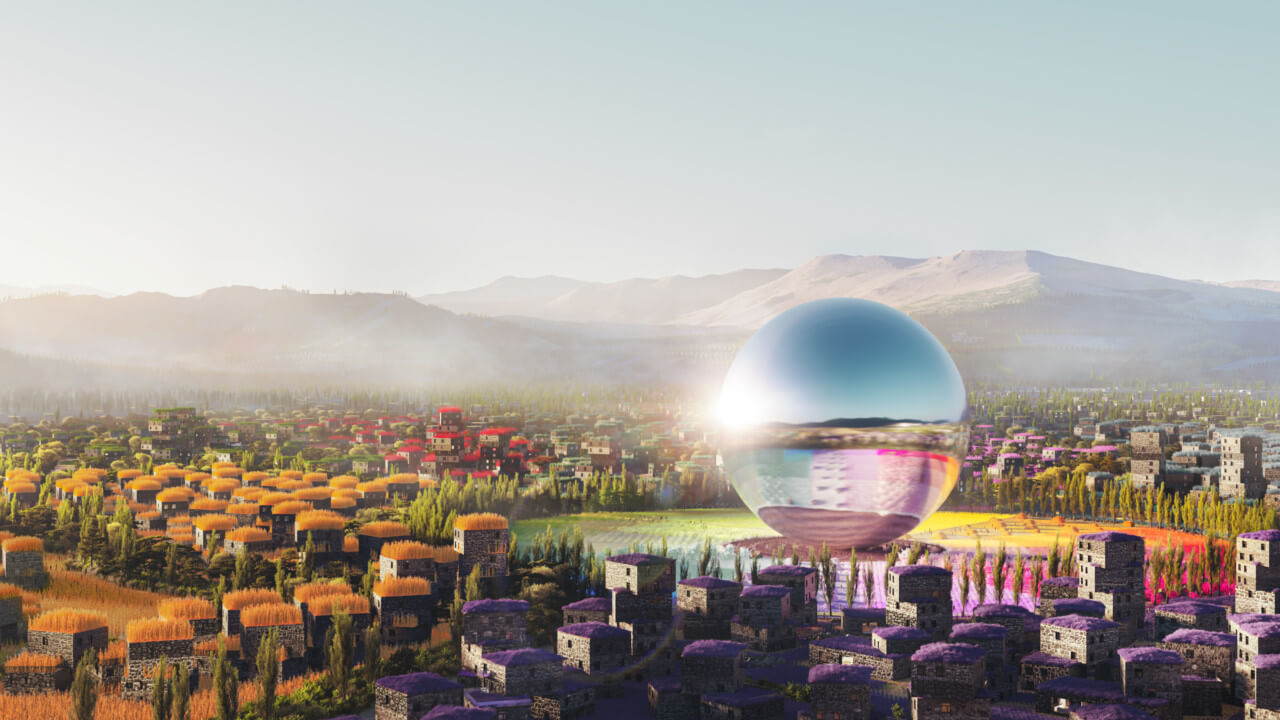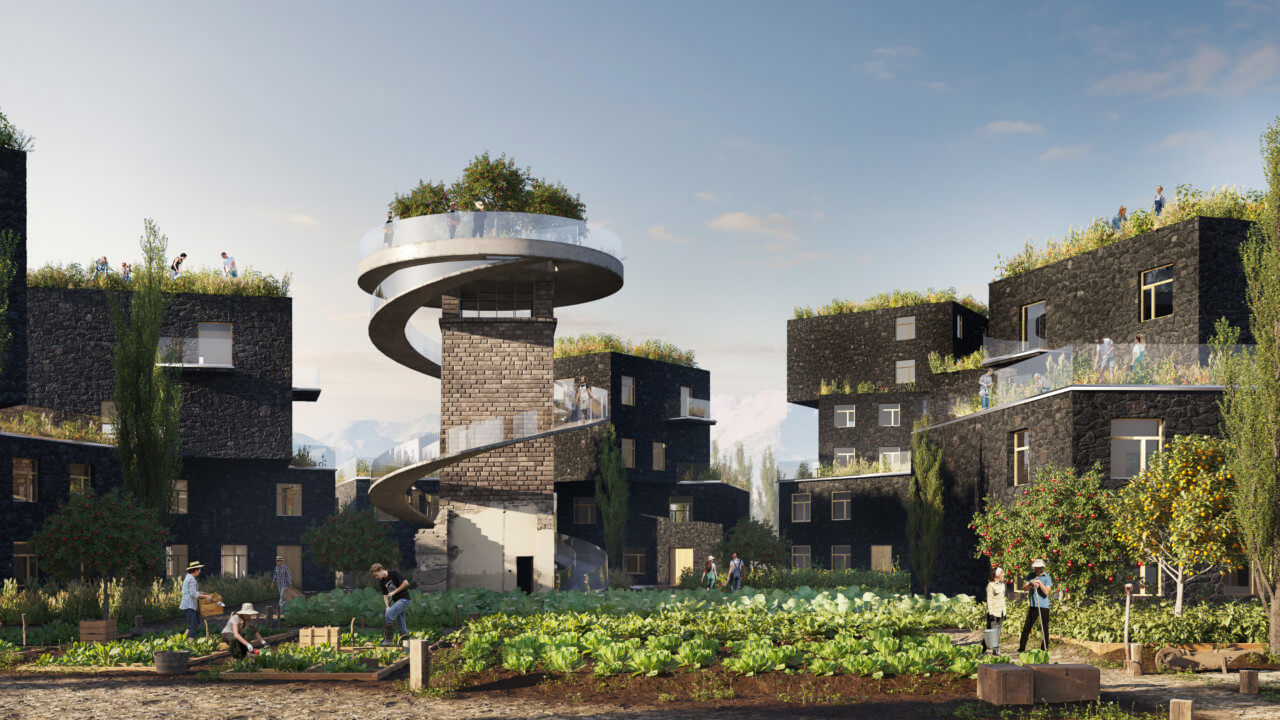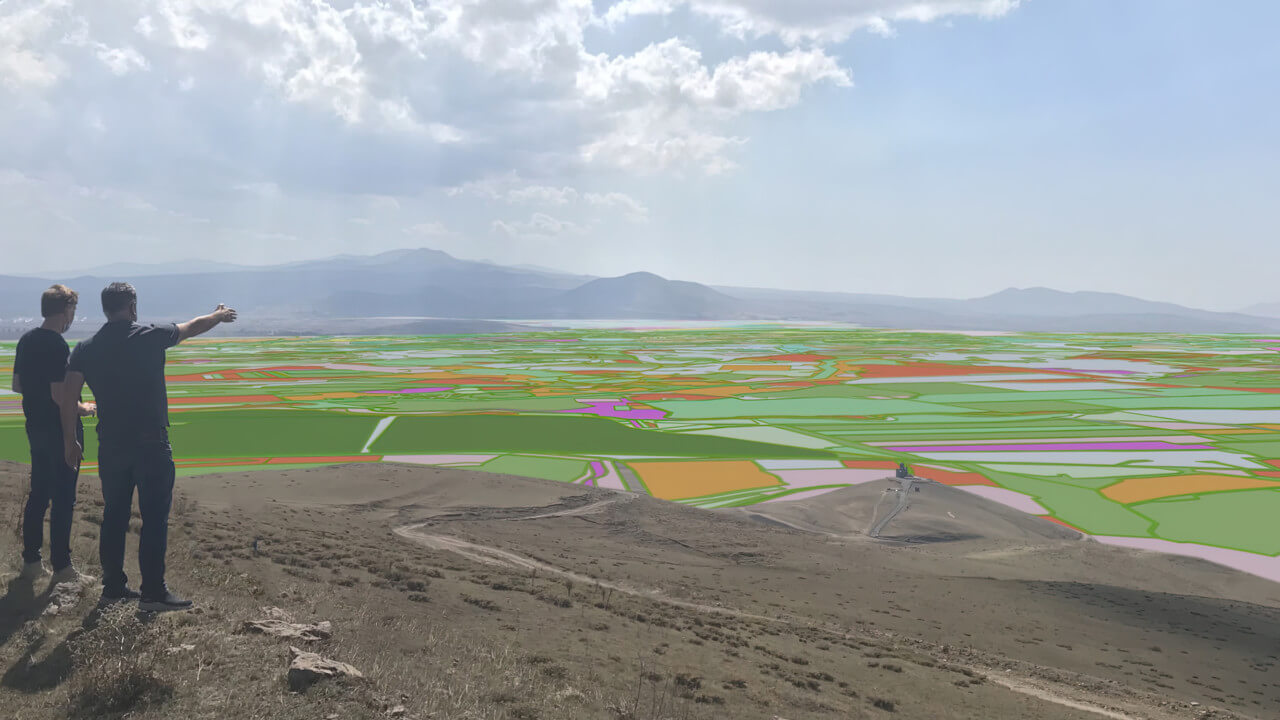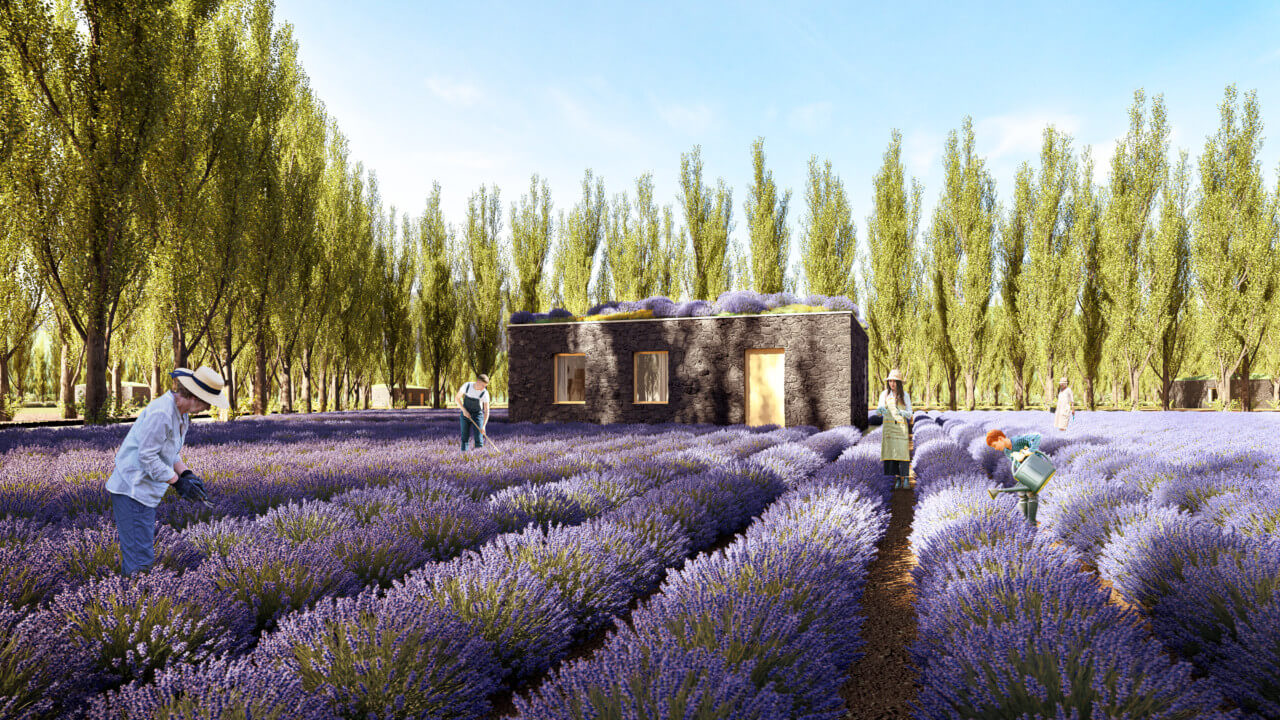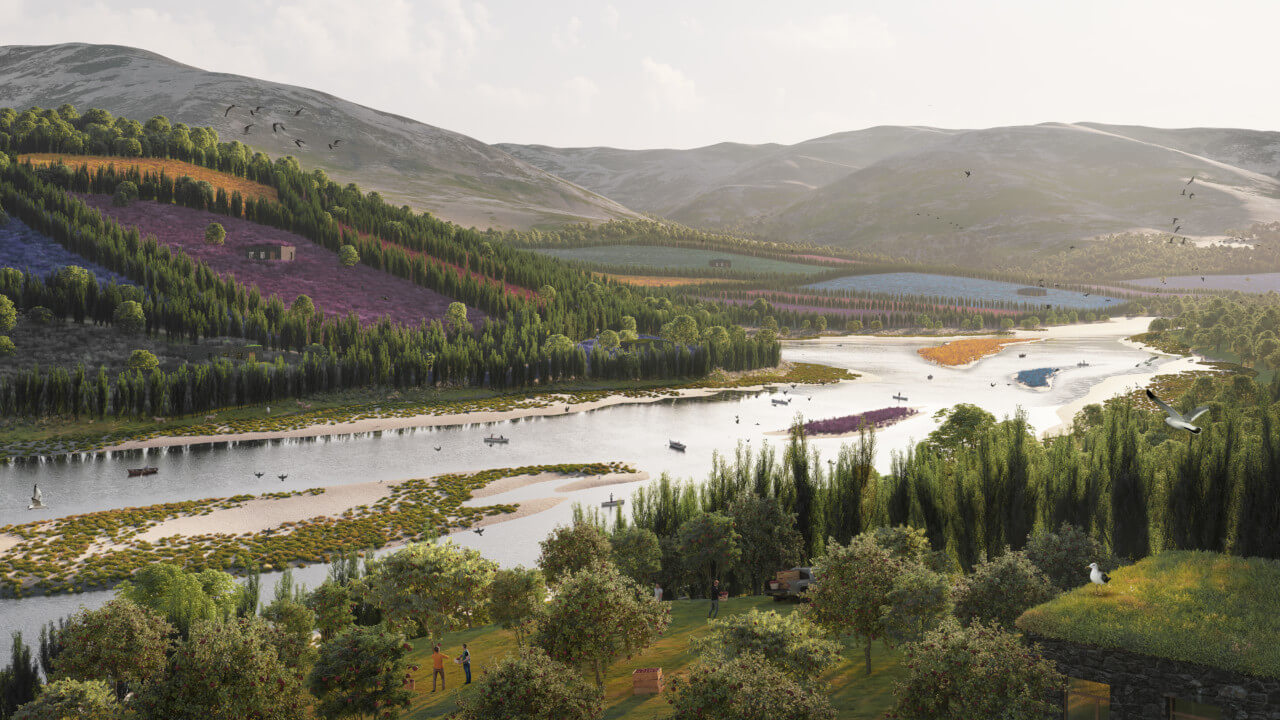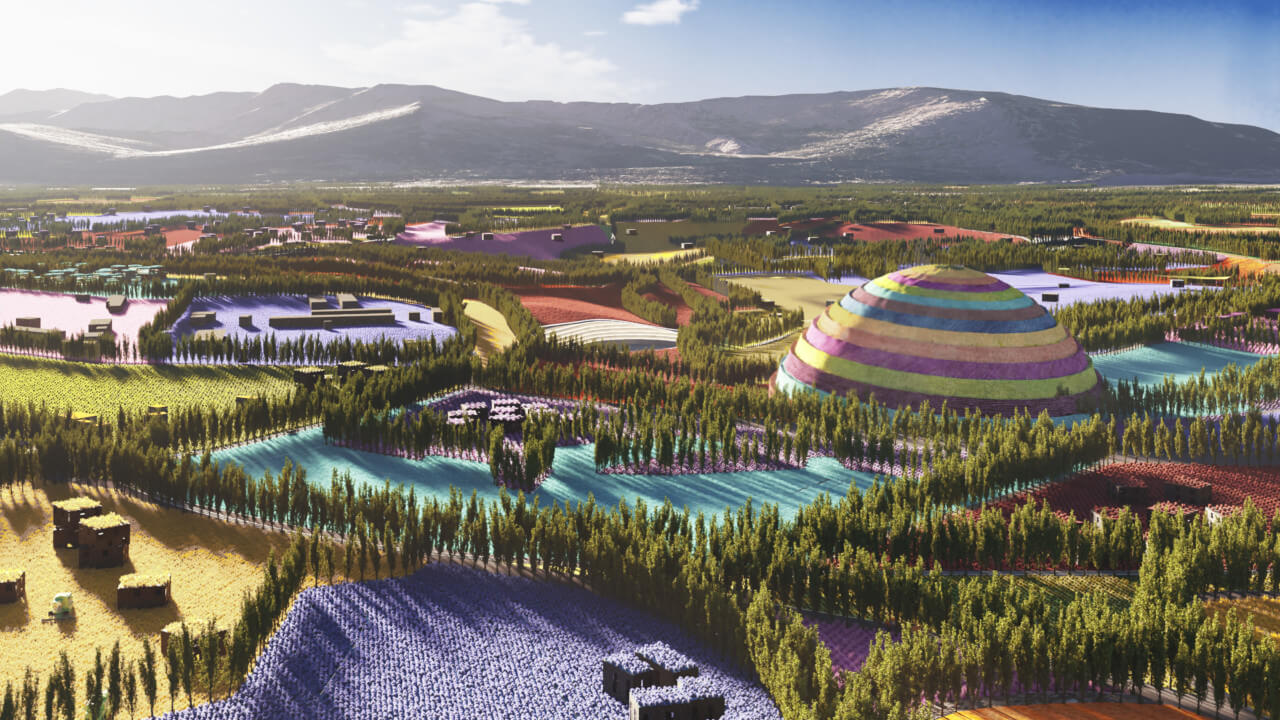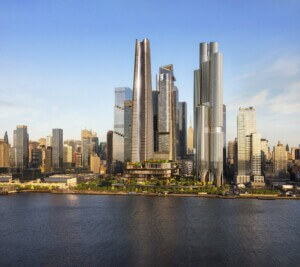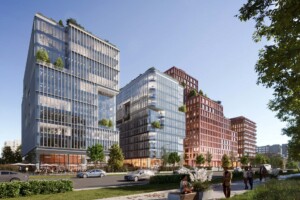Rotterdam’s MVRDV, which in recent weeks has unveiled an O-shaped German housing block and a lumpy edifice clad entirely in photovoltaic panels for Taiwan, has shared its master plan for a pointedly arcadian housing development-slash-sustainable agricultural hub and ecotourism destination that will span more than 840,000 acres within a valley near Armenia’s Lake Sevan.
Named Gagarin Valley after the Soviet cosmonaut Yuri Gagarin, who, in 1961, became the first human to venture into outer space, the master plan entails a patchwork of 10,000 gardens anchored by an educational agricultural complex that will take the form of a colossal mirrored sphere emerging from the pastoral landscape. As detailed by MVRDV founding partner Winy Maas in a statement, the sphere will serve “as a mini-planet, where the classrooms surround a spherical void and where all the species of the valley and beyond are shown and monitored.
“The sphere will be surrounded by a central park that contains all the species—a scientific arboretum, reflected in the mirroring sphere, “added Maas. “Gagarin would have loved it, I think.”
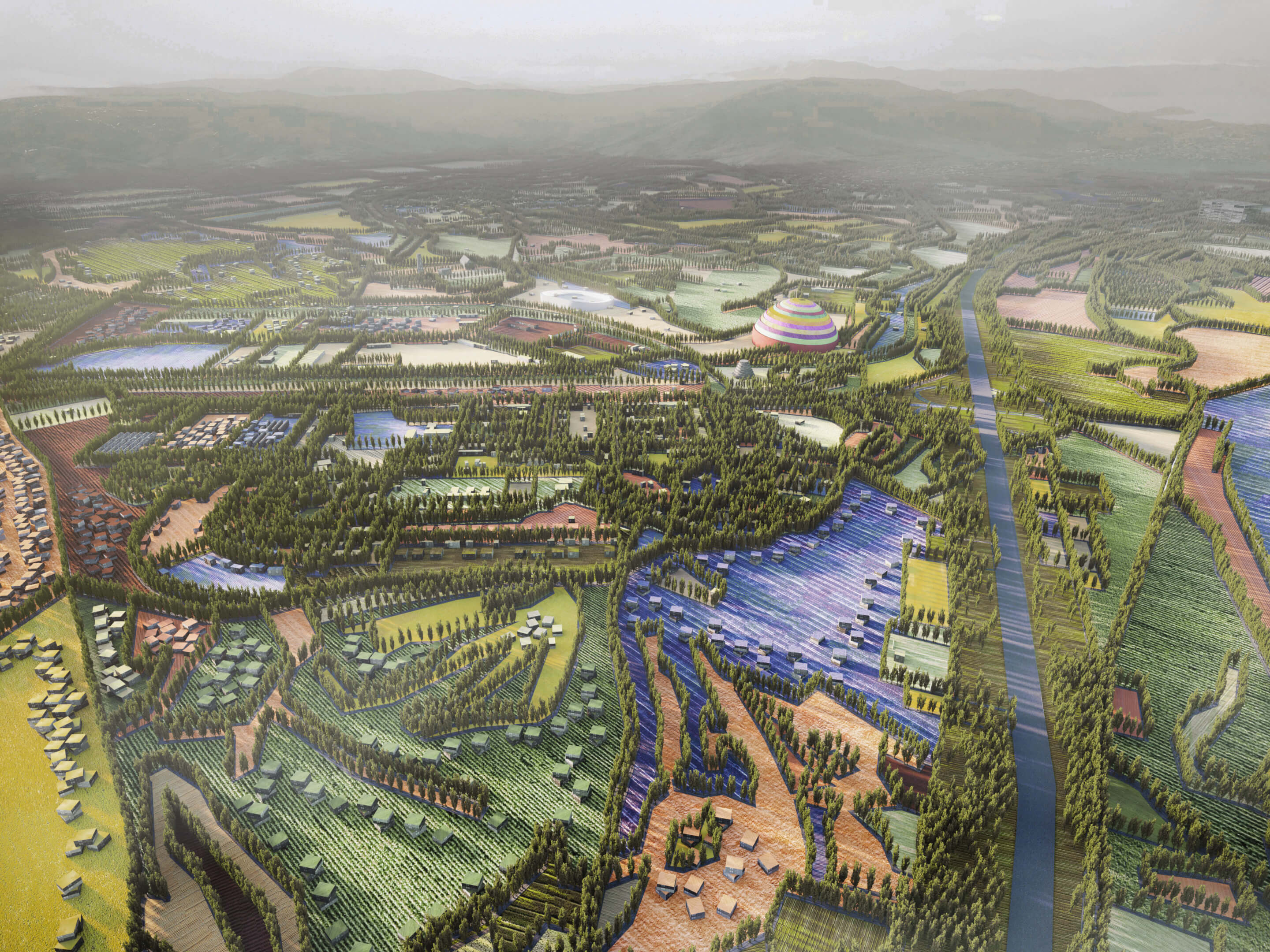
Also envisioned is a “sunken stadium” with room for 4,500 spectators, a domed market hall, and an arts center.
The master plan, which was commissioned by the Armenian nonprofit DAR Foundation for Regional Development and Competitiveness, also envisions housing for 35,000 residents. This figure includes the 11,000 people who currently reside in a smattering of rural villages spread across the valley along with room for 24,000 new arrivals. The valley’s existing Soviet-era housing will be deconstructed; salvaged building materials will be used to create new, green-roofed abodes inspired by traditional Armenian farmhouses. Existing roads that weave throughout the valley and connect the villages will be improved and joined by a network of trails for cyclists and pedestrians. “This new future and the innovative, sustainable housing will make the valley attractive for different target groups and make the area attractive again for young Armenians,” the firm explained in a press release.
In addition to luring a new generation of residents to the largely rural Gegharkunik Province, the Armenian government is also anticipating that Gagarin Valley, located roughly 30 miles from the capital city of Yerevan, will become a major international tourist draw with a focus on outdoor recreation—cycling, horseback riding, and the like—and sustainable agriculture.
(Per MVDRV, the mountainous landlocked country in the South Caucasus region aims to attract 2.5 million tourists annually by 2026 and that “the transformed Gagarin Valley” would play a formidable role in this.)
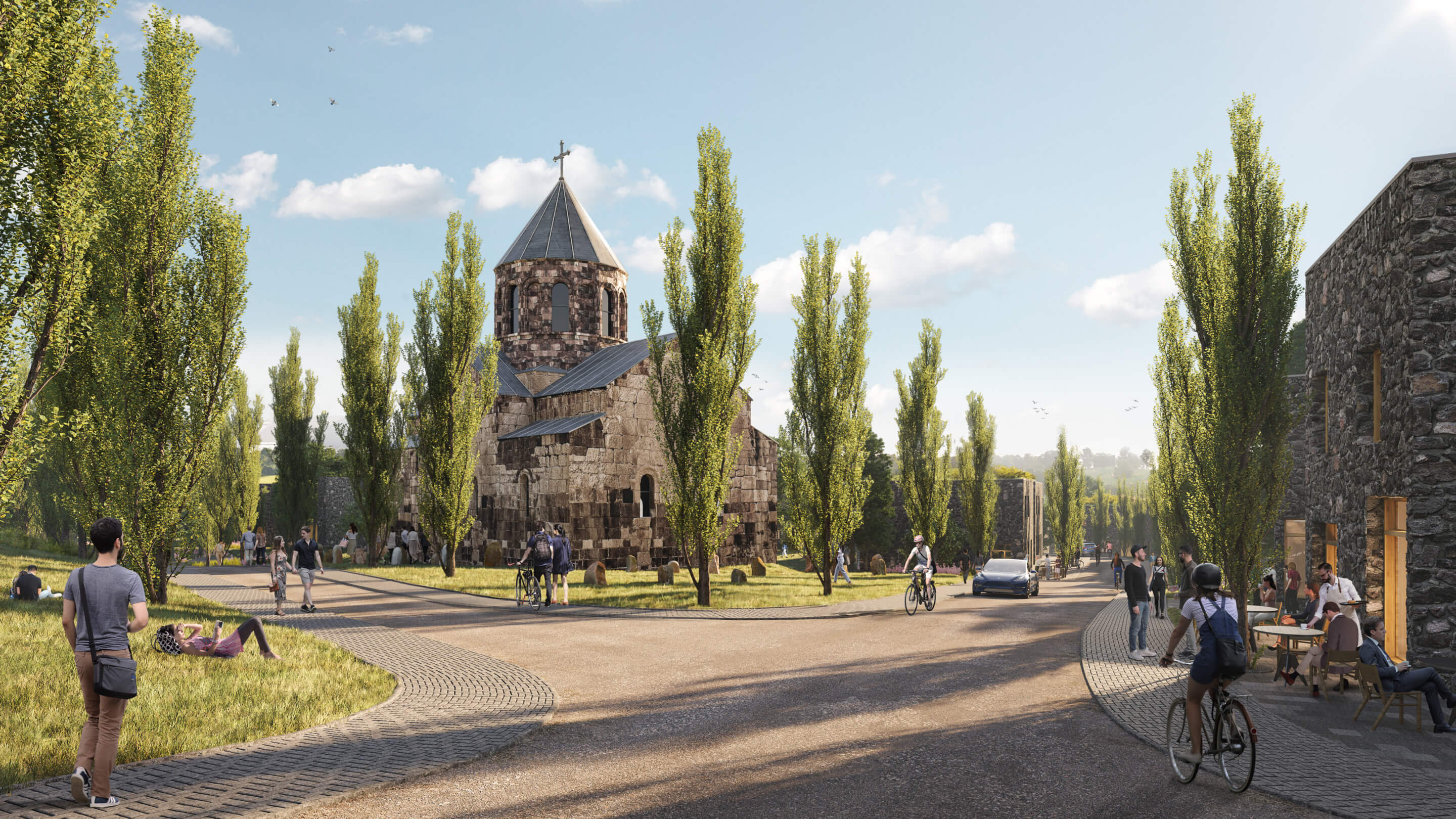
Described as a “versatile and future-proof landscape that is suitable for sustainable agriculture on various scales,” MVDRV’s ambitious master plan will “preserve and reinforce” the 10,000 existing agricultural plots spread throughout the valley, a third of which are owned by local communities. In addition to the introduction of a new water management system for irrigation that would involve diverting the Hrazdan river to create a network of canals and reservoirs, new species of plants will be introduced to each of the plots to “not only make the landscape visually more attractive, but also stimulate economic diversity,” according to the firm.
“ … He saw the planet’s vulnerability, a house in need of extra care, as many other astronauts have since stressed,” Maas said of the valley’s trailblazing namesake, who passed away alongside pilot Vladimir Seryogin in 1968 when the jet fighter they were operating crashed in Russia’s Vladimir Oblast during a routine training flight. He was 34.
“I share that concern: stimulating biodiversity, improving water management and the ecosystem is of great importance for the future of the Gagarin Valley and the world,” continued Maas. “The valley can be seen as a series of test fields for the 10,000 species that will soon flourish there, an enrichment that will give the area the appearance of a garden of Eden.”
No timeline or costs associated with the quixotic master plan’s implementation have been announced.






